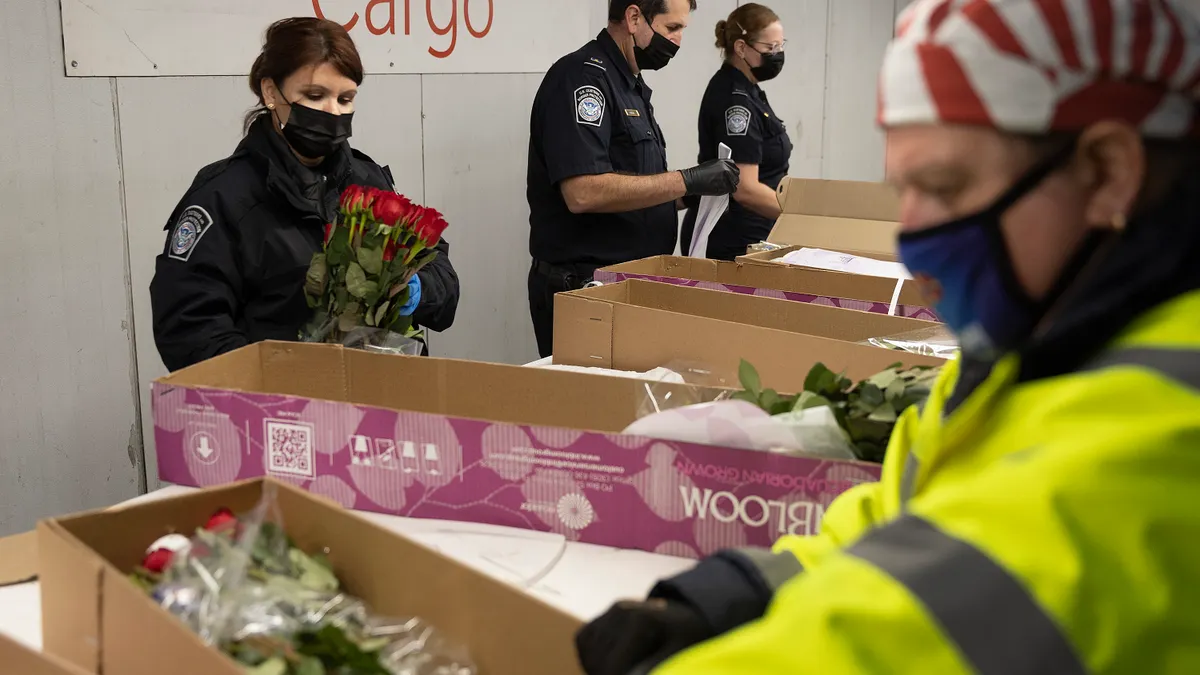Business
Shippers Brace for Potential Tariff Refunds Amid Legal Ruling

The White House has reported that tariffs imposed this year have generated over $150 billion in revenue. However, a Supreme Court hearing scheduled for November 5, 2023, could change this landscape significantly by potentially mandating refunds for some of that revenue. The court will examine the legality of President Donald Trump’s invocation of the International Emergency Economic Powers Act (IEEPA), following lower court decisions that ruled against certain tariffs.
Treasury Secretary Scott Bessent indicated that if the Supreme Court affirms the lower court decisions, the U.S. might need to refund approximately half of its tariff income. “If the court says it, we’d have to do it,” Bessent stated during an appearance on NBC’s Meet the Press on September 7, 2023. The implications of this ruling could lead to an unprecedented wave of refund requests from shippers, presenting a complex challenge for the U.S. Customs and Border Protection (CBP).
Understanding the Potential Refund Process
Legal experts anticipate significant uncertainty surrounding the refund process. Should the Supreme Court invalidate Trump’s use of IEEPA, only tariffs associated with specific duties would qualify for refunds. These include duties related to fentanyl trafficking from Canada, Mexico, and China, as well as various tariffs finalized in August. An analysis by PricewaterhouseCoopers suggests that revenues from these tariffs could reach as much as $108 billion by the end of October.
Greg Tompsett, Vice President of customs brokerage at Kuehne + Nagel, noted the potential scale of refund requests. “This would be 100 times more than anything they’ve seen previously,” he remarked. The timeline for potential refunds remains ambiguous, particularly as experts believe the Supreme Court may remand the case back to lower courts, complicating the resolution process.
In general, requesting tariff refunds is a standard practice for shippers. Importers typically have two primary methods for seeking refunds. The first involves filing a post-summary correction with CBP during the “liquidation period,” which lasts approximately 300 days following a good’s entry into the U.S. During this period, importers can submit adjustments to their initial documentation. Conversely, if the liquidation period has ended, importers can file a formal protest with CBP within 180 days of that period’s conclusion.
Possible Changes in Refund Procedures for IEEPA Tariffs
The potential refund process for IEEPA levies may diverge from standard procedures. Experts have varied opinions on how refunds will be handled. Mike Short, president of global forwarding at C.H. Robinson, outlined two scenarios: “Either Customs will process the refunds automatically, or brokers will need to undertake additional work to secure them.” An automatic process could be feasible given that most customs entries are filed electronically.
Historically, there have been precedents for CBP to adopt a more automatic approach, particularly following legal challenges to the Section 301 tariffs imposed on imports from China. In that instance, the U.S. government agreed to automatically issue refunds if the tariffs were struck down. However, with the recent affirmation of the legality of Section 301 tariffs, it remains uncertain whether a similar approach will be applied to the current IEEPA tariffs.
To prepare for potential refunds, importers face differing strategies. Some experts, including Kelsey Christensen, an international trade attorney at Clark Hill, advocate for requesting liquidation extensions. Others suggest allowing liquidation to occur and then filing protests as developments unfold. “Even if there’s uncertainty as to the remedy, it should be manageable,” Christensen noted.
For companies heavily impacted by tariffs, seeking a liquidation extension may be the safer route. Another option for importers is to file a complaint in federal court, likely at the Court of International Trade, particularly if substantial amounts are at stake. Legal experts recommend that firms request an injunction to halt liquidation until a final decision regarding the IEEPA tariffs is made.
Regardless of the chosen strategy, shippers must ensure their product classifications are accurate and that they possess the necessary documentation, including entry forms and bills of material. Understanding the liquidation status of entries will be crucial for determining eligibility for post-summary corrections or protests, depending on the Supreme Court’s decision. Importers must also be aware of which tariffs apply to their entries, as some may fall under additional duties, such as those enacted under Section 232.
As the legal landscape evolves, companies should remain vigilant and prepared for the implications of potential tariff refunds. The outcome of the Supreme Court hearing will undoubtedly shape the future of tariff policy and the financial landscape for importers across the United States.
-

 Lifestyle5 months ago
Lifestyle5 months agoLibraries Challenge Rising E-Book Costs Amid Growing Demand
-

 Sports4 months ago
Sports4 months agoTyreek Hill Responds to Tua Tagovailoa’s Comments on Team Dynamics
-

 Sports4 months ago
Sports4 months agoLiverpool Secures Agreement to Sign Young Striker Will Wright
-

 Lifestyle4 months ago
Lifestyle4 months agoSave Your Split Tomatoes: Expert Tips for Gardeners
-

 Lifestyle4 months ago
Lifestyle4 months agoPrincess Beatrice’s Daughter Athena Joins Siblings at London Parade
-

 Science4 months ago
Science4 months agoSan Francisco Hosts Unique Contest to Identify “Performative Males”
-

 World4 months ago
World4 months agoWinter Storms Lash New South Wales with Snow, Flood Risks
-

 Science5 months ago
Science5 months agoTrump Administration Moves to Repeal Key Climate Regulation
-

 Business5 months ago
Business5 months agoSoFi Technologies Shares Slip 2% Following Insider Stock Sale
-

 Science5 months ago
Science5 months agoNew Tool Reveals Link Between Horse Coat Condition and Parasites
-

 Sports5 months ago
Sports5 months agoElon Musk Sculpture Travels From Utah to Yosemite National Park
-

 Science5 months ago
Science5 months agoNew Study Confirms Humans Transported Stonehenge Bluestones









